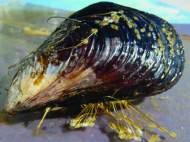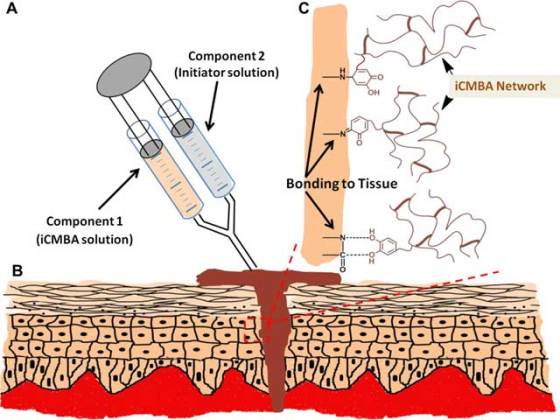Mussels inspire innovative new adhesive for surgery
 While some people find them disgusting and other consider that they are a mouthwatering meal, various research groups focus on study of muscles and employing their findings in new innovations. Pennsylvania State University (Penn State) and University of Texas-Arlington (UT Arlington) researchers investigated the chemistry that allows mussels to stick to underwater surfaces in order to devise a highly adhesive wound closure that could lead to faster patient recovery after surgery.
While some people find them disgusting and other consider that they are a mouthwatering meal, various research groups focus on study of muscles and employing their findings in new innovations. Pennsylvania State University (Penn State) and University of Texas-Arlington (UT Arlington) researchers investigated the chemistry that allows mussels to stick to underwater surfaces in order to devise a highly adhesive wound closure that could lead to faster patient recovery after surgery.
In recent decades bio-adhesives, tissue sealants and hemostatic agents became the favored products to control bleeding and promote tissue healing after surgery. However, many of them have side effects or other problems, including an inability to perform well on wet tissue.
“To solve this medical problem, we looked at nature”, said Jian Yang, associate professor of bioengineering at Penn State. “There are sea creatures, like the mussel, that can stick on rocks and on ships in the ocean. They can hold on tightly without getting flushed away by the waves because the mussel can make a very powerful adhesive protein. We looked at the chemical structure of that kind of adhesive protein.”
In cooperation with UT Arlington researchers Mohammadreza Mehdizadeh, Hong Weng, Dipendra Gyawali and Liping Tang, Yang took the biological information and developed a completely synthetic family of adhesives. They incorporated the chemical structure from the mussel’s adhesive protein into the design of an injectable synthetic polymer. The researchers also created a one-step synthesis of a family of what they named injectable citrate-based mussel-inspired bioadhesives (iCMBAs).
iCMBAs have controlled degradability, improved biocompatibility at lower manufacturing cost, putting them ahead of current products such as fibrin glue and cyanoacrylate adhesives.
The researchers tested the newly developed iCMBAs on rats, using the adhesive and finger clamping to close three wounds for two minutes. Three other wounds were closed using fibrin – fast acting and biodegradable glue with relatively poor adhesion strength. iCMBAs provided 2.5 to 8.0 times stronger adhesion in wet tissue conditions compared to fibrin glue. iCMBAs stopped bleeding instantly, facilitated wound healing, closed wounds without the use of sutures and offered controllable degradation.
“If you want the material to stay there for one week, we can control the polymer to degrade in one week”, said Yang, who leads the Transformative Biomaterials and Biotechnology Lab (TBBL) at The Penn State University (Yang laboratory). “If you want the material to stay in the wound for more than a month, we can control the synthesis to make the materials degrade in one month.”
The iCMBAs are also non-toxic, and because they are fully synthetic, they are unlikely to cause allergic reactions. However, their synthetic nature can also lead to mild inflammation of the area where it was applied.
The researchers are now working on improving the formula by making the adhesion strength even stronger in order to expand its use onto broken bones, where strong adhesion is tremendously important. The researchers are also looking at adding in component with anti-microbial properties in order to enable dual function of their adhesive, since it could be used to control infection while adhering.
The iCMBAs could eventually be used in a wide range of surgical disciplines from suture and staple replacement to tissue grafts to treat hernias, ulcers and burns.
For more information, read the article published in the journal Biomaterials: “Injectable citrate-based mussel-inspired tissue bioadhesives with high wet strength for sutureless wound closure” [2.61MB PDF].










Leave your response!